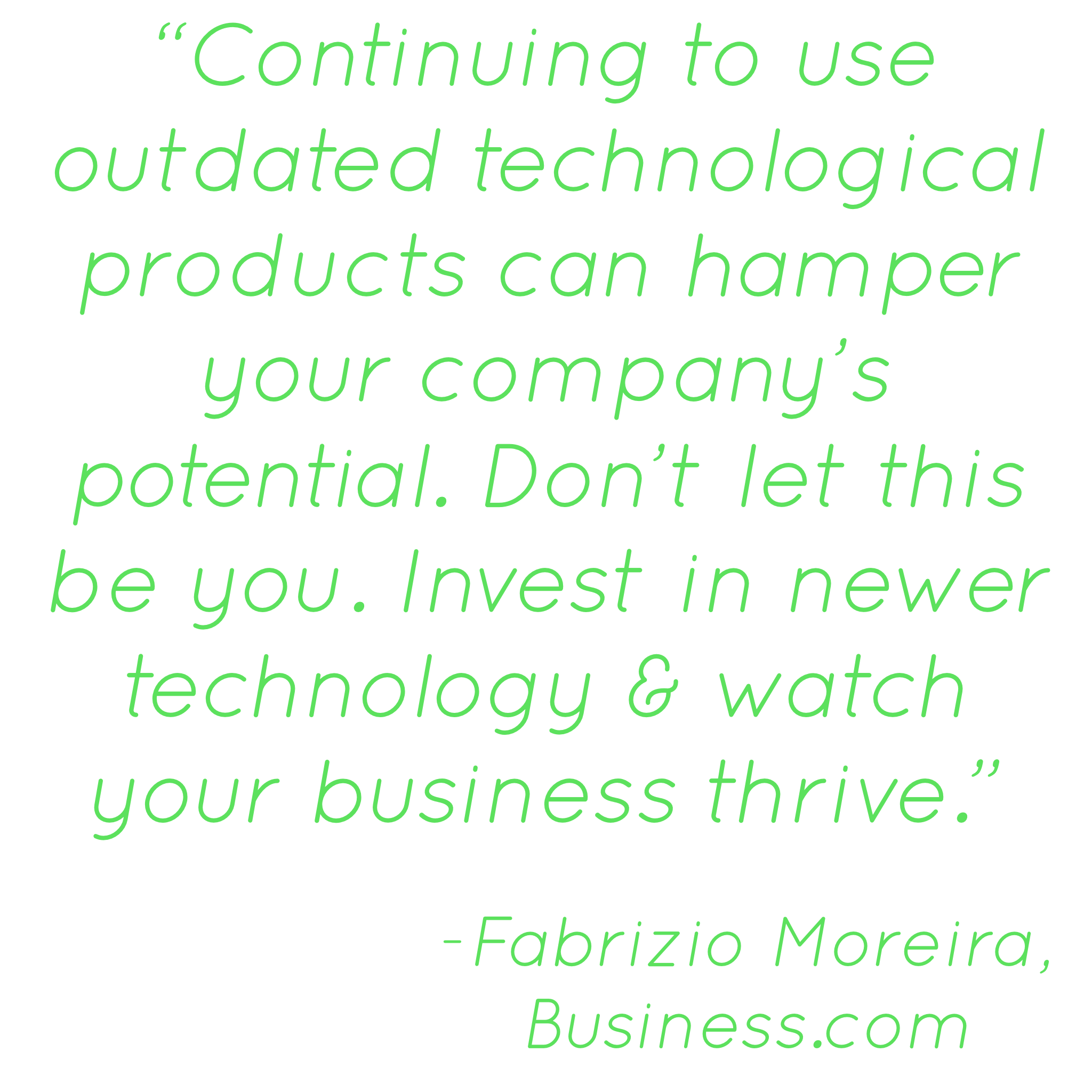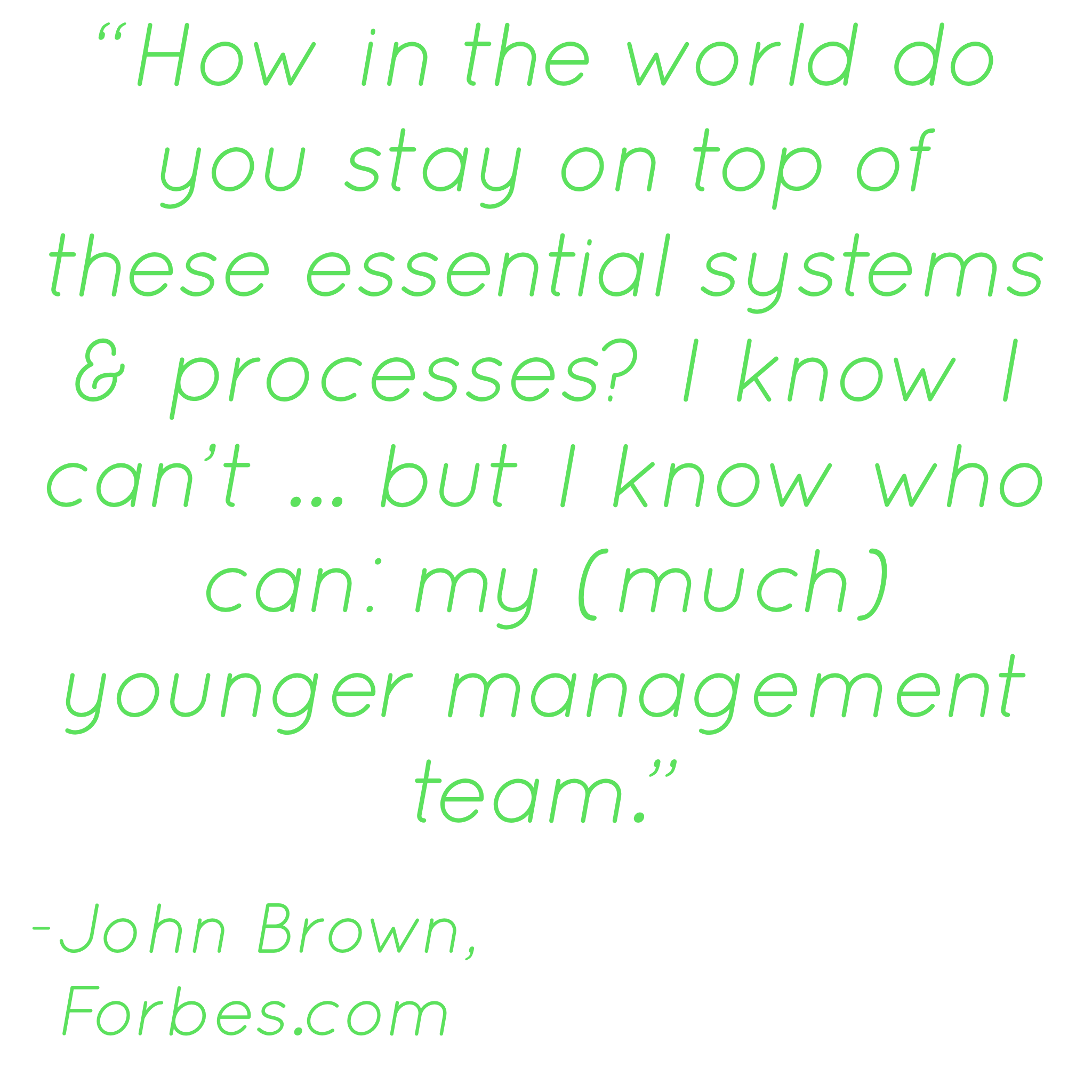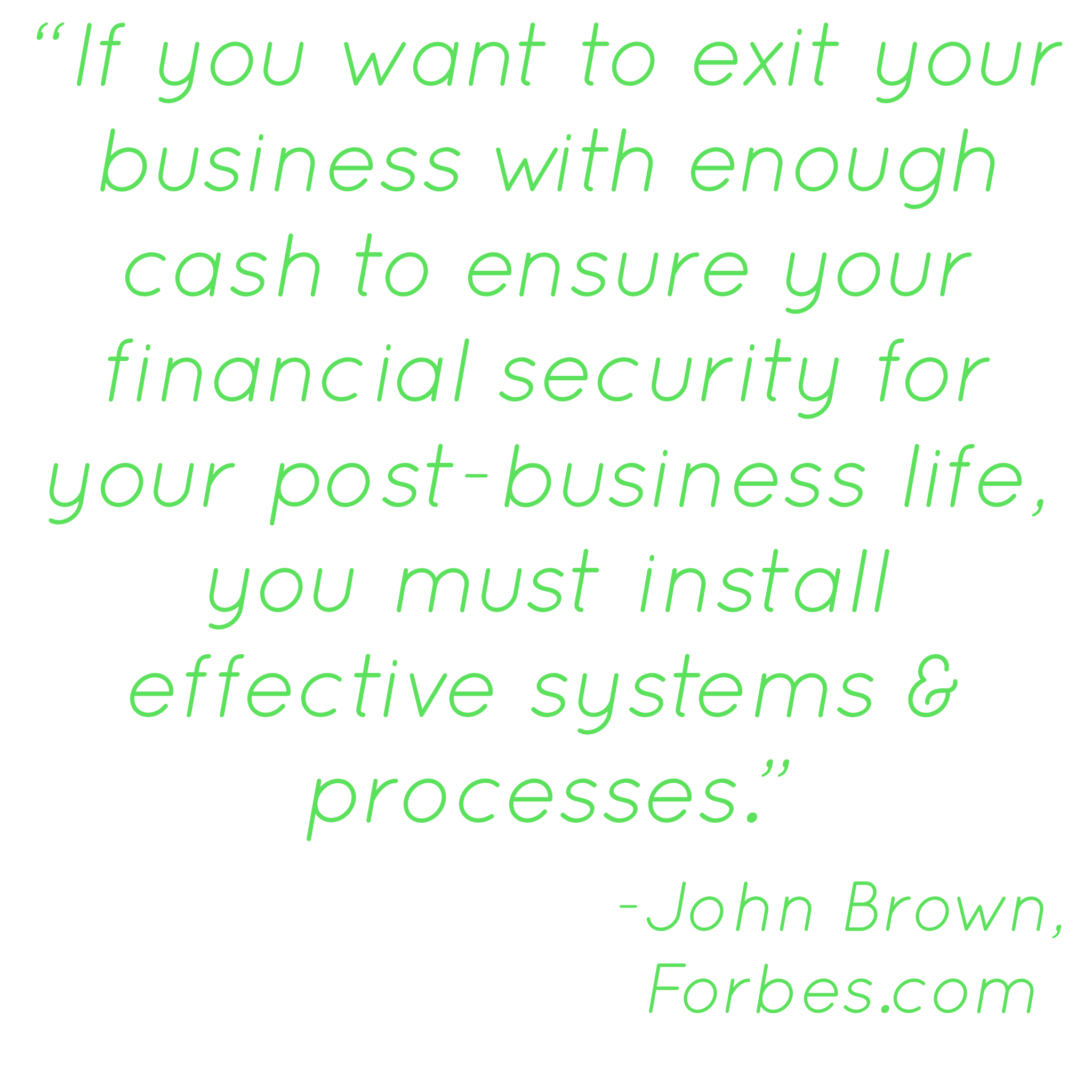There are a host of challenges and risks that come with implementing a new software system. It’s not a decision any business owner wants to make lightly.
But, by sticking with the same old software systems, you’re curbing your business’ true potential and making things more difficult for partners, employees, and yourself.
[ Check out our Tech Talk video series – How to get the most value from existing software systems ]
So how do you know if delaying those couple months of growing pains is actually costing your business its long-term success?
How can you tell if your software really is detrimental and know that it’s the right time to make the leap to something better?
Below, we list the top 5 indicators that it’s time to replace your software, as well as the top 5 best times to make the switch.
Exceed the limitations of your software

5 Signs it’s time to upgrade your business software
1. You’re forced to adapt your business processes to work with your software
Really think about this one, because if you’ve grown so used to working around or within your software’s constraints, you may not even realize you’re doing it.
Talk to the people who use it the most, ask “is this the most efficient and effective way to run?”, let them think on it, and come to a well-thought-out conclusion together.
Your software should operate based on what your business needs to run well, not the other way around.
2. You KNOW there are better options out there
Maybe you saw a really cool feature at a conference, or you love how simple a colleague’s processes work with their business. Meanwhile, your software is not only unable to support these types of features, sometimes you feel like it’s actively working against you.
This can make it feel like you’re missing out on really cool advancements, but what’s worse, you’re limiting yourself. You’re leaving behind opportunities for your business to evolve.
Even if you aren’t moving ahead with your technology, you can bet your competitors are. If you don’t stay ahead of the curve, you have to at least keep up with it, or your business will get left behind.
3. Software systems are the obvious source of your bottlenecks
When you investigate the pain points your business faces, does your software seem to be a common denominator?
If you’re noticing time and again that your software is the reason for delays, setbacks, inefficiencies, missed opportunities, and bottlenecks, that’s a good indicator that it’s hurting, not helping, your business.
And if it’s hurting your business, it’s time to accept that the process of learning new software is going to do a lot more than push your forward — it’s going to stop you from being held back.
4. Your employees’ opportunities (and your ability to recruit) are becoming more and more limited
If your staff is being forced to work around cumbersome software processes, those processes are likely hampering their productivity and creativity. Outdated software places limits on what they can do, where they can do it from, and how they can do it.
Potential employees entering the workforce are also set up with skills and expectations for newer technologies; if you aren’t able to match up, they will look elsewhere, and your ability to attract and retain top talent dwindles, hurting the future of your business.
This has major negative impacts on your business. After all, productivity and creativity are the wellsprings of growth. Without them, you’ll quickly become stagnant, falling behind your competitors and into obscurity.
Speaking of which …
5. Customers are asking for things you can’t deliver
Code Yellow
There are two parts to this one; the first we’ll call a warning sign or a code yellow. This is when customers and partners start repeatedly asking for services that your business can’t deliver.
This doesn’t mean something wildly out of your service offerings (if you’re running a construction company and a client asks if you can service their washing machine, that’s on them). We’re talking about simple things that they are starting to expect, like submitting requests online or real-time progress updates.
Now, ideally, you want to be at the forefront of these service offerings and have them available before your customers even ask, but we’re past that point here. The good news is you still have time to assess, plan, and get these services in place before you start losing customers.
 Code Red
Code Red
The place you really don’t want to be in is the danger zone, which we’re going to call a full-blown code red situation. This is when you’re lagging so far behind in your technology that the majority, or even the leading majority, of your competitors are already offering services that your technology simply can’t support.
Remember, your software is supposed to be pushing you forward, not holding you back. If you’ve reached this point, your software has brought you to the brink, and you need to make a change now.
Of course, you know the saying “The early bird gets the worm!” but in business, the first few early birds get 90% of the worms, and the remaining birds are scrambling to get any of the 10% left behind. We wish we could say “don’t panic,” but if you’ve reached code red status, you’re fighting for that 10% now, so it’s time to step up before someone else does.
This Harvard Business Review article covers some of those concepts and more extreme measures for keeping up with or fending off startups.
Code Green
If you’re reading this and not yet falling into either Code Yellow or Code Red, you may have the opportunity to feast on that first 90%! Don’t let the opportunity pass you by.
Make sure your company truly is offering the latest technological advancements to your customers, and keep it that way. Customers who’ve come to expect the best certainly have higher expectations.
They won’t stick around long if you drop too far below the innovation curve.
The 5 biggest opportunities to upgrade your business software
1. You’re launching a new division or experiencing a staff transition
If you’re adding a new division to your company or increasing your service offerings, chances are this will require hiring new employees and/or teaching current employees new skills.
This is a great time to introduce new software!
Your employees will already be working on a learning curve, and what better way to simplify things than to allow them to learn their new skills in conjunction with this new software, instead of relearning the whole process over again in the future.
You can create the most efficient processes in this new area without being held back by old software.
Similarly, if a large number of employees are approaching retirement, or you’re bringing on a larger-than-usual number of new employees, you’re perfectly primed to introduce a new software system. Learning a system from the start is easier than adjusting from an old to a new way of doing things.
The biggest advantage of switching at this time, however, is that you’ll soon have plenty of experts with the new system, and your other employees can rely on them for assistance and troubleshooting.
2. A new generation of leadership or employees
Your business is already transitioning, and with that, change is to be expected. Similar to the addition of a division or a high staff transition, the transference of leadership is a great time to implement new software.
Your new leadership team will benefit from learning new software right off the bat and in conjunction with any processes, services, or operations changes that come with the transition.
Chances are, your younger employees are already more comfortable with newer technologies anyway, so whether they’re already working for you or you’re bringing them on, they’ll likely adjust to new technologies quickly.
3. You’re considering selling in the next 5 years
John Brown, owner of Business Enterprise Institute and a contributor for Forbes, also gives advice for those looking to eventually retire and sell their company.
“If you want to exit your business with enough cash to ensure your financial security for your post-business life, you must install effective systems and processes.”
If you have any plans to sell your business in the near future, you’ll want to increase its value as much as possible. A business with old, outdated technology and employees accustomed to that outdated technology is not going to look attractive to buyers.
If the idea of selling is even a possibility, adopting new software now and training your employees to use it is a smart move.
4. Industry changes demand it
This goes back to the red flag of customers asking for new technologies. In certain industries, however, this need can be even greater than others.
If you’re noticing a large shift in the way your competitors are doing business or an overall trend in your industry, don’t wait!
Remember, it’s the early birds that have easy access to the worms, so as soon as you start noticing a shift, jump on it! You may feel like things are already running smoothly or you just don’t have the time, but you’ll have a lot less time if you’re scrambling to catch up; and the sooner you adapt, the sooner your business will run better and net bigger profits.
5. Your core systems are above a certain age (reaching “classic” status)
Some companies can get away with the same software for ten, fifteen, or even twenty years (although we don’t usually recommend it!). However, at a certain point, you’ll start to notice pitfalls, like compatibility issues with systems over five years old, and systems ten years and older eventually become obsolete.
With a new system, you’ll find a much broader expert base, so finding support when things go awry will be a breeze compared to older systems.
Another, often overlooked, pitfall of older software is cost. Business owners typically compare the cost-benefit of new software with the results they’ll get from it, but that’s only one aspect. The maintenance costs for older software can be astronomical compared to newer systems — and that’s if you can even find an expert who’s knowledgeable in that specific system.
Think of an aging car: as it gets older, repairs become more and more expensive and the number of mechanics with the knowledge to service it starts to dwindle down to a few specialists.
It only takes 20 years for a car to reach the distinction of “classic,” a moniker that sounds nice, but often means most mechanics entering the field aren’t being trained to service it. And remember, technology moves much faster than the automobile industry.
In all likelihood, the graduates leaving school this year haven’t been trained to repair the system you’re using. This is one instance where you really don’t want the distinction of a classic. If you aren’t taking your software out for a Sunday drive, it’s more “clunker” than “classic.”
The Time to Switch is Now!
We can never grow younger, and neither can our software. Unfortunately, that won’t stop the times from changing or technology from advancing. You can resist it and try to play catch-up later, or stop dragging your feet and allow your business to evolve with the current technological environment.
New companies are always popping up, and there’s a reason startups are able to become multi-million dollar companies — they’ve embraced new technologies, and customers respond to it.
Being late to the game could cost you opportunities or major market shares.
Remember — great software is always built around your business, so it can only benefit you, your employees, and your bottom line. The sooner you start, the sooner you’ll start seeing results.
So, are you ready to ditch your clunker & start moving forward?
Still unsure what’s best for your business? For software solutions or personalized consultations, we’re here to help with software services.





